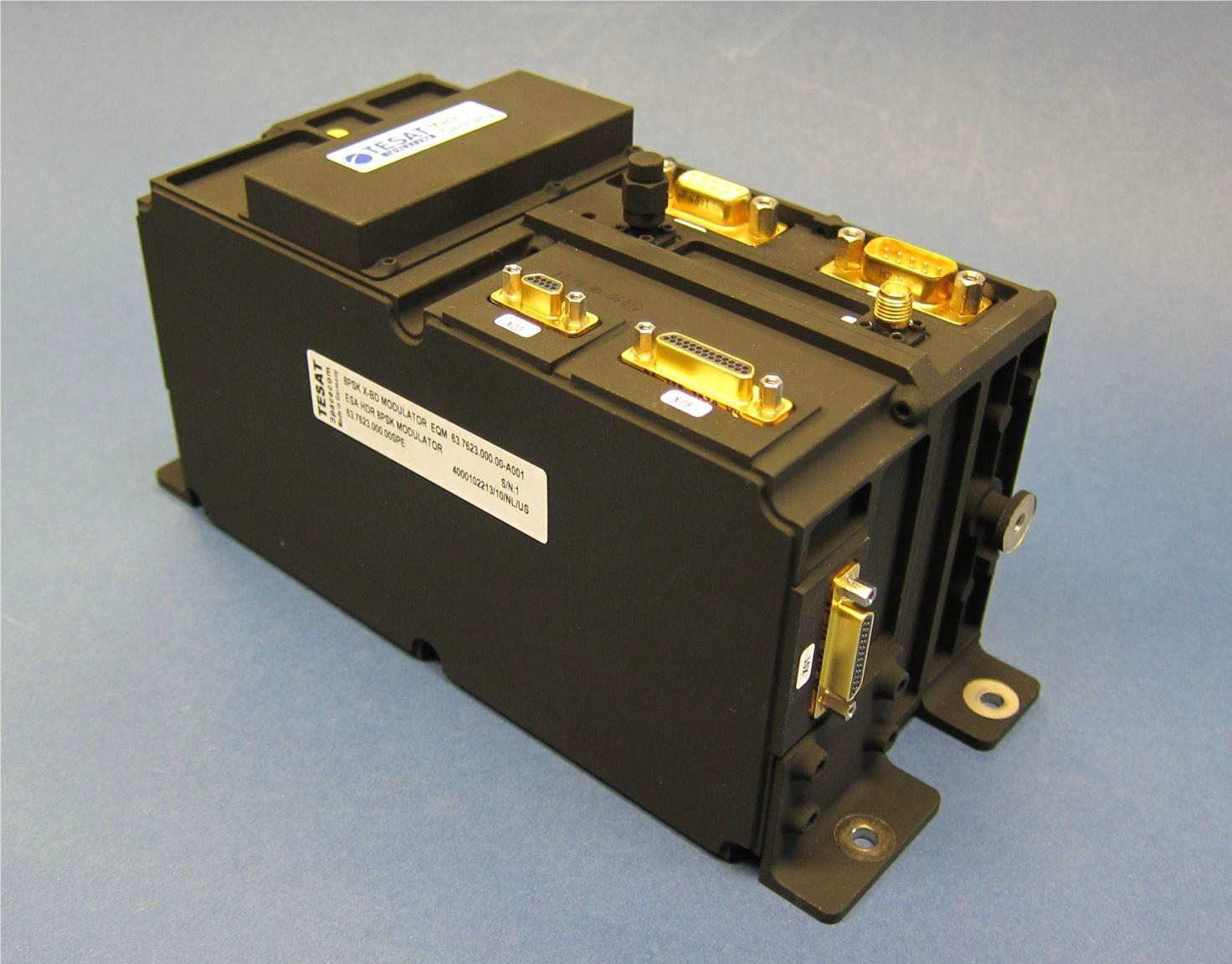TESAT’s high-flying, high-performance X-band modulator: a data-relay and data-downlink star

The International Data Corporation (IDC) estimate that by 2020 there will be around 40 trillion gigabytes of data in existence. To cope with this increasing volume, data rates for satellite transmission to the ground need to be augmented. TESAT, experts in manufacturing payload equipment for communication satellites, have developed in response a high-performance 8PSK X-band Modulator under ESA’s ARTES Competitiveness & Growth (ARTES C&G) programme.
We are now in a generation of huge data volumes, with many applications taking a vast number of high-resolution photographs.To meet increasing demands for the high data rates required for Earth Observation (EO), meteorological and data-relay missions, TESAT, based in Backnang, near Stuttgart, have developed and manufactured a high-performance modulator with ESA’s support.
“The 8PSK X-Band Modulator represents a new level of performance and efficiency for data-relay and data-downlink applications,” Sven Rettig, Head of Marketing and Sales at TESAT
Modulators have a vital role in the satellite network, varying the frequency, amplitude or other characteristics of a radio wave or another carrier wave in order to transmit information. TESAT, under ARTES C&G, designed the latest-generation high-capacity modulator with two key target applications in mind – data relay and data downlink.
Geostationary communication satellites receive data via an inter-satellite link from a Low Earth Orbit satellite and need to transmit high quantities of data from the geostationary satellite to the ground. Low Earth Orbit satellites (mainly used for EO) also need maximum capacity during ‘data-downlink’ where data transmission occurs during the ‘fly over’ period – when the satellite passes over the ground station as it orbits the Earth.
“The 8PSK Modulator has a much higher bandwidth efficiency so the amount of data which can be transmitted to ground is considerably higher when compared to traditional QPSK Modulators,” explains Massimo Bertinelli, Communication System Engineer at ESA. “It also covers the complete X-band frequency range reserved for EO downlinks from 8.025 GHz to 8.4 GHz and is capable of transmitting data rates of up to 600 Mbps.”

The project can also be seen as a conscious re-design of its predecessor as it includes a number of new features such as a redundant data input interface, additional switching commands, test mode, as well as design optimisations to maximise 8PSK’s electrical performance.
The engineering qualification model of the modulator passed a number of rigorousenvironmental, reliability and qualification tests comprising vibration, shock, thermal vacuum, and electromagnetic compatibility.
“ESA support, including the Critical Design Review, was an integral part of the project and ultimately shaped the quality and suitability of the product for the intended application,” says Dr. Siegbert Martin, Chief Technology Officer at TESAT.
As a final advantage, the 8PSK X-band Modulator’s generic design means it’s highly flexible in terms of carrier frequency, data rate, coding scheme and data interfaces. This makes 8PSK something of a ‘future-proof’ product as it can be easily adapted for customer needs going forwards.
“Since its market introduction, the 8PSK Modulator has become the workhorse for customers who have to transmit high amounts of data from a satellite in X-Band.
It has been selected for a number of flight programmes, including data relay and data downlink applications. This is an excellent example of the importance of the ARTES programme to perform innovative developments and turn them into successful products.” Dr. Philipp Rieger, Head of Strategy at TESAT


